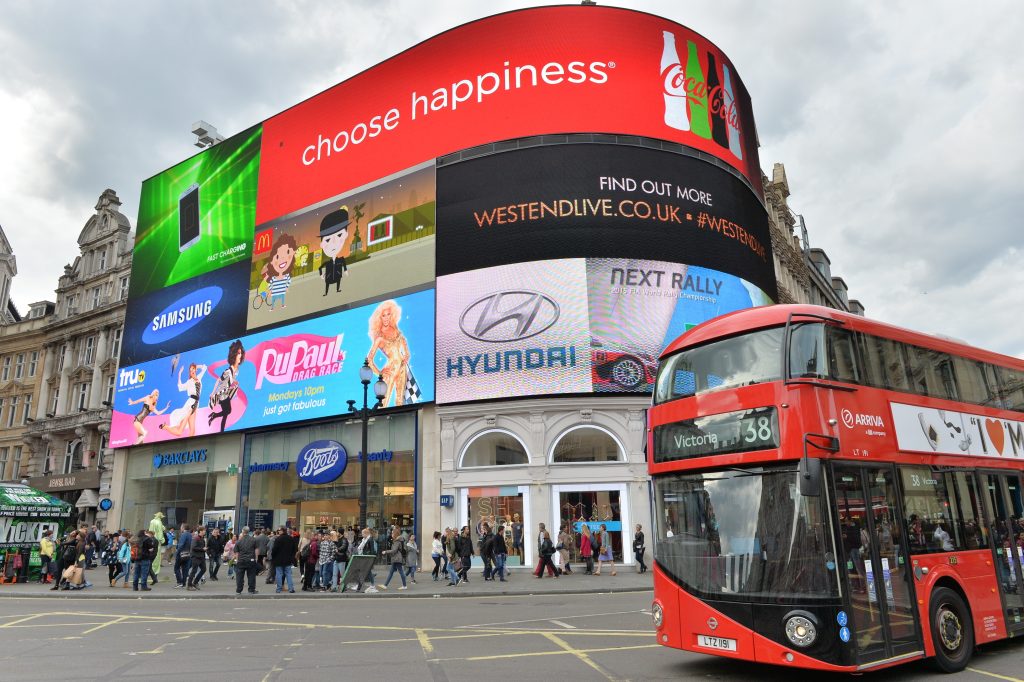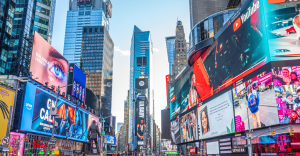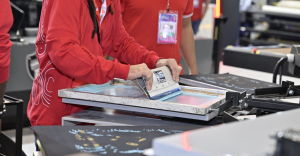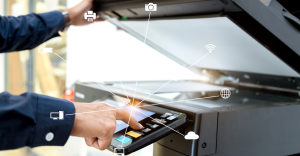Bill No. 01-00239/2023, authored by councilman Rubinho Nunes (União Brasil), aims to modernize the Clean City Law (Law 14.223/2006) to allow the installation of LED panels and digital advertising in designated areas of São Paulo. Inspired by hubs like Times Square (New York), Piccadilly Circus (London), and regions in Seoul, the project proposes creating an OOH media district in the heart of the city. The text was approved in its first vote in the City Council and is now heading to public hearings and a second vote.
The creation of a digital media district could position São Paulo as a Latin American hub for OOH advertising. While there are no official investment estimates, analysts suggest figures in the hundreds of millions of reais, surpassing $500 million depending on the concession model. In New York, the panels at One Times Square alone generate annual revenues of $20 to $25 million. Although the total value is not officially disclosed, this indicates the financial potential for the city.
But how does the approval of this law impact São Paulo’s visual communication market? Learn more about this topic below.
Paulistana Times Square: Origin and Objective of the Project
Bill No. 01-00239/2023 aims to “modernize and improve the Clean City Law,” in effect since 2007, which restricts billboards and advertisements on properties. Among its main proposals are establishing new criteria for brightness and luminosity to avoid glare in traffic; expanding areas where advertising is allowed on properties, based on frontage measurements; and enabling cooperative messages between companies and the public sector.
The idea is for the city to better utilize its urban environment for media actions, especially in tourist areas and high-traffic locations—hence the comparison to the original Times Square. Among the locations mentioned by the press and the author’s office are:
- Av. Ipiranga × Rua São João: A landmark in the historic center.
- Rua Santa Ifigênia: A technology hub.
- Largo da Batata, Pinheiros: A bustling area.
- Av. Paulista: A cultural and financial corridor.
These areas combine high pedestrian traffic and tourism potential, key elements for attracting investments in outdoor media.
Expected Impacts on the Urban Landscape
The proposal could transform São Paulo’s landscape, reversing the changes brought by the Clean City Law, which removed billboards from the city’s visual environment. The IAB-SP (Institute of Architects of Brazil) warns of risks such as visual pollution and impacts on cultural heritage. The bill stipulates that advertisements must not obstruct the view of at least 30% of protected landmarks, which in practice allows up to 70% obstruction—a point contested by urban planners.
However, the project highlights some expected benefits, such as revitalizing the downtown area, stimulating urban tourism, and generating new municipal revenues.
Installation of LED Panels: What Changes?
With the relaxation of the Clean City Law, visual communication companies should focus on three main points:
- Brightness and traffic safety: Panels must have lighting designs to avoid glare.
- Special licensing: Digital media zones will be designated and subject to concessions.
- Service expansion: Digital printing, electrical installation, design, and audiovisual content will gain prominence.
Industry entities and representatives see potential in modernization but call for caution in regulation to avoid a return to the “visual disorder” of pre-2007. Associations advocate for urban planning, oversight, and transparency in concessions to ensure economic benefits without compromising visual quality.

Opportunities for the Visual Communication Sector
Professionals in digital printing, signage, large formats, and facades can directly benefit from:
- Panel installation and maintenance.
- Dynamic content production for OOH media.
- Energy-efficient solutions, such as low-consumption LED and solar energy.
- Integration with local tourism and commerce, enhancing the surrounding area.
Companies that anticipate investments in technology and technical training will be better positioned when the market opens. Models like Times Square, Piccadilly Circus, and Seoul’s media districts demonstrate that integrating technology, art, and urban planning can yield positive results, provided there is clear regulation and constant oversight.
A New Chapter for Visual Communication
The debate over the “Paulistana Times Square” goes beyond advertising: it is a reflection on how visual communication can enhance urban spaces.
If well-executed, the project could mark the beginning of a new era for Brazilian outdoor media, driving investments and creating jobs in installation, digital printing, and technology.
However, success depends on dialogue between the public sector, urban planners, and the market, ensuring that the brightness of the screens does not overshadow the city’s essence.




